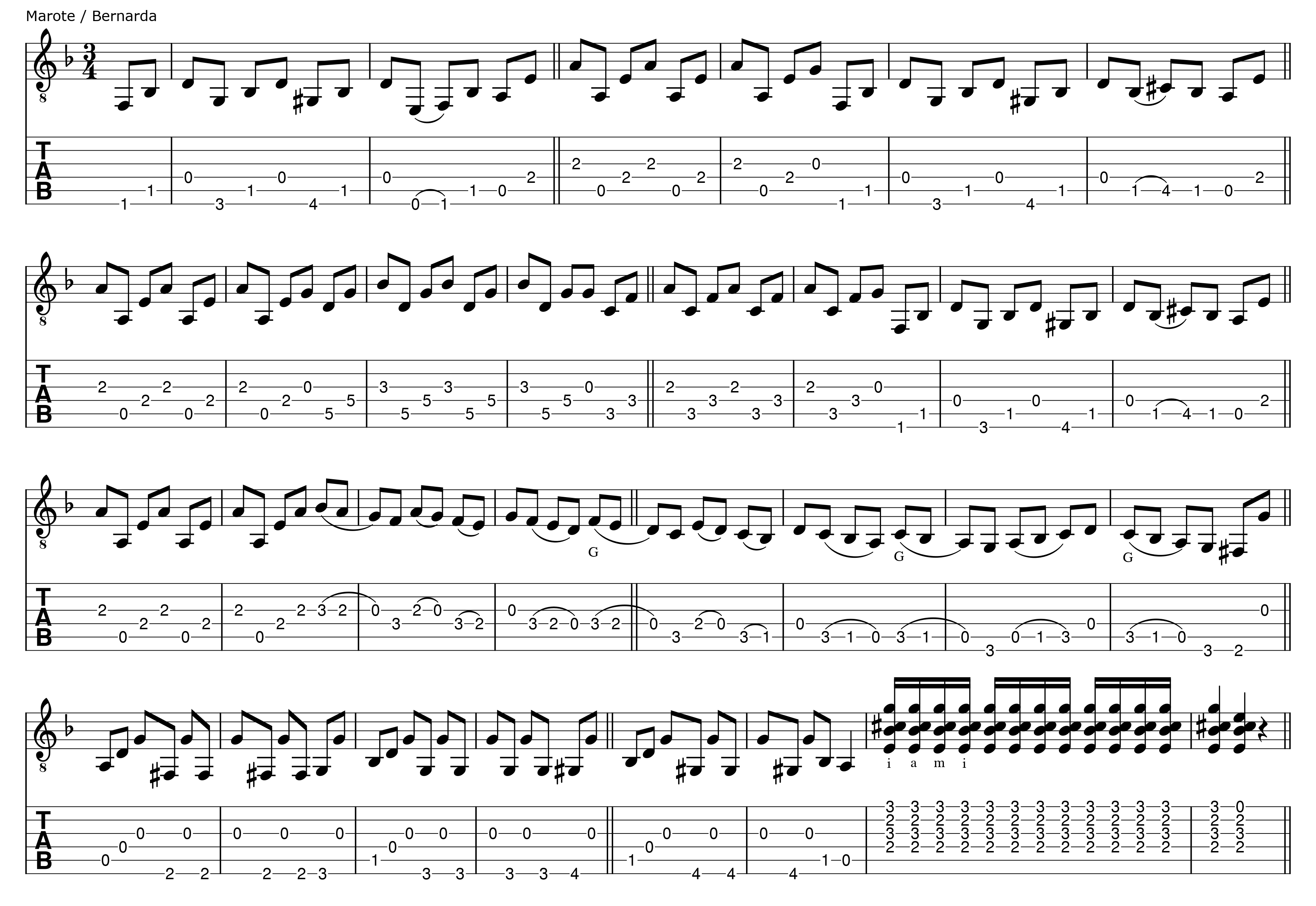
This is just one of the many titanic falsetas of Juan Maya "Marote" from the legendary 1970 recording "El cante de Fernanda y Bernarda de Utrera," heard at the beginning of Bernarda's earth-shaking bulería "Todo el mundo nos separa." Capo at the second fret.
Double bar lines appear between beats 12 and 1. Although the falseta starts on beat 12 in the recording, it starts on beat 6 in the transcription.
In the first part, everything up to the slurs can be played p-p-i (thumb-thumb-index). Notice how this involves alternating the stress between the first and second thumbed notes, as the ternary (three-part) mechanism is played in eighth notes.
At the middle of the falseta, an unvarying pattern of slurs descends from the third-string B flat to the sixth-string G. The symbol "G" indicates a loud fingernail tap although there are other fleshy thumps that aren't indicated. From the sixth-string G, Juan slurs on the fifth string up to the open fourth and back down to the sixth.
The rhythmic counterpoint at the end of the falseta reflects Juan's extraordinarily strong rhythmic drive and sense of dissonance. Use your thumb for the sixth, fifth and fourth strings and your index for the third. If the sixth-string F sharp and third-string G don't seem to make sense, think Dsus4 and listen to the recording. If you have trouble keeping the thumping counterpoint mechanism under control, you can try gradually increasing the intensity within each fretting-hand pattern. In other words, back off of your attack at the first F sharp (sixth string second fret) and gradually increase the intensity to peak at the G sharp (sixth string fourth fret).
